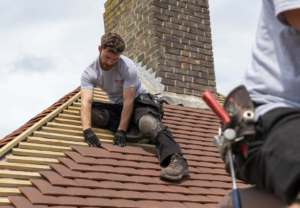The kitchen is often the most-used room in a home. Remodeling it can add value and make the space more appealing to prospective homebuyers.
Storage space is an important consideration in any kitchen remodel. A reputable contractor can help find ways to maximize storage without sacrificing space for cookware and pantry items. Click the Kitchen Remodeling Tacoma WA to learn more.
The cost of Kitchen Remodeling varies depending on the scope of work and materials. Labor is a major component, with demolition, construction, plumbing, and electrical services all adding to the final price tag. Regional labor rates and the complexity of the project also impact costs. The budget should include allowances for unexpected expenses, such as electrical upgrades and new flooring.
Before meeting with a pro, make sure you have a realistic idea of your goals and budget. Then, start sourcing inspiration to narrow down your vision and choose the elements that will most benefit your lifestyle and add value to your home. It’s important to keep functionality in mind when choosing cabinets, appliances, and other fixtures, says Lin. For example, if you entertain guests often, you might want to invest in a more durable countertop or high-end dishwasher.
To cut remodeling costs, look for deals and discounts on items like appliances, cabinets, countertops, and flooring. Shop sales, browse online clearance, and consider refurbished or second-hand appliances to save money on essentials. You can even get creative and repurpose existing furniture to reduce the overall cost.
The kitchen is the heart of the home, and a stunning one is a big draw for buyers. However, it’s critical to weigh the payback against your lifestyle and financial goals before investing in a full-scale kitchen renovation.
If your current kitchen isn’t working for you, it might be worth the investment to upgrade to a space that reflects your style and will accommodate your family’s needs. However, if you plan to sell soon, a surface-level redesign may be more practical.
Before hiring a pro, research kitchen trends and the associated costs. This will help you establish a realistic spending limit and avoid surprises down the line. You should also factor in the cost of professional installation. Considering the time and energy involved in DIY installations, it might be worth the investment to hire professionals for the most complex tasks.
Design
Kitchen Remodeling is a great opportunity to create the perfect space for cooking, eating and entertaining. But the process can be complicated and expensive, so it’s important to carefully consider your goals before starting a renovation project. A professional contractor will help you develop a plan that fits within your budget and adds value to your home. Here are a few tips to avoid common mistakes during kitchen remodeling.
The first step is to decide whether you want a minor remodel or a major remodel. A minor remodel involves refreshing surfaces and replacing fixtures without changing the basic structure of your kitchen. A major remodel, on the other hand, may involve tearing down walls, building new ones, relocating plumbing and electrical lines, and even combining rooms to create a larger space.
Once you’ve decided on the scope of your kitchen renovation, prepare a list of necessary changes and desired upgrades. This will help your contractor estimate the cost of materials and labor. You can also use this list to prioritize your changes. It’s a good idea to communicate with your contractor frequently so they can understand your vision and provide helpful suggestions.
While it’s tempting to choose custom features that reflect your personal taste, over-customizing your kitchen could limit its appeal to future homeowners. Try to select design styles and finishes that are appealing to a wide range of tastes. Also, remember that your kitchen is an integral part of the whole house, so it’s important to make sure the entire space flows well.
Choosing the right materials is essential for a successful kitchen renovation. High-quality products will improve the longevity of your renovation and increase the value of your home. If you’re considering a new countertop, for example, you should look for durable materials that resist heat, staining, and scratching.
During kitchen remodels, it’s also a good idea to choose lighting that illuminates your workspaces and enhances the overall aesthetic of your kitchen. In addition to recessed cans and track lighting, consider installing pendant lights above countertops and islands for a more streamlined appearance.
Functionality
When done well, kitchen remodeling can add significant value to your home. Prospective homebuyers often prioritize properties with upgraded kitchens, and you can easily recoup much of the costs when you decide to sell. A professional team of professionals can help you create a functional and stylish space that aligns with modern design trends and meets your family’s needs.
A kitchen remodel is a great opportunity to tailor the heart of your home for your family’s unique lifestyle. It’s also a chance to make a statement about your style and personality. With an open mind and a clear vision, you can transform your outdated kitchen into the perfect heart of your home in 2025.
Kitchen remodels can improve storage and workspaces, and can incorporate a variety of innovative features. For example, new drawers and cabinets can accommodate organizers, pull-outs, and specialty racks to streamline your storage spaces. Additionally, smart appliances and lighting can make your kitchen more functional and beautiful.
Workflow and traffic patterns can also be improved during a kitchen remodel. This includes ensuring that the sink, refrigerator, and stove are within easy reach. You can also update your countertop materials to increase durability and reduce maintenance. Choose a material that suits your aesthetic and fits your budget. For example, quartz is a popular choice because it is durable and easy to clean.
Another way to enhance the functionality of your kitchen is by installing a backsplash. This can prevent spills and stains from damaging your countertops, and it will also add color and texture to your kitchen. In addition to this, a backsplash can protect your walls from the impact of hot pans and dishes.
Finally, a new kitchen can also boost the efficiency of your energy use by upgrading to energy-efficient appliances. This will not only save you money on utility bills, but it will also minimize your carbon footprint.
Kitchen remodeling can be a costly project, but it is important to work with a reputable company that will provide you with the best results. A reputable contractor will be licensed, insured, and certified to perform the work. They will also have a detailed plan and schedule for your project. This will ensure that the work is completed on time and within your budget.
Sustainability
A kitchen remodel that incorporates sustainable materials and practices not only makes a positive impact on the environment, but also increases the value of your home. In an era where environmental consciousness is at the forefront of societal concerns, many homeowners are opting for eco-friendly options when remodeling their kitchens.
One way to make your kitchen more green is by replacing old appliances with energy-efficient models. This will reduce your utility bills and carbon footprint. Similarly, switching to LED lighting is another way to save energy and money. Moreover, using repurposed wood and recycled glass in your kitchen adds style and reduces the demand for new materials. Moreover, using low-VOC paints in your kitchen helps maintain healthy indoor air quality.
Another important consideration when choosing sustainable kitchen materials is their durability. For example, cork flooring is a durable material that’s both eco-friendly and beautiful. Alternatively, you can choose bamboo flooring, which is renewable and has high strength. Another option is to use recycled glass tiles for your backsplash. These materials are durable, attractive, and come in a variety of colors. They also have low levels of volatile organic compounds (VOCs), which are harmful to the environment.
Moreover, you can opt for energy-efficient dishwashers, refrigerators, and ovens to reduce your utility bill and your carbon footprint. In addition, installing a rainwater collection system in your kitchen can help you recycle water and cut down on the amount of drinking water that is consumed. A programmable thermostat and smart appliances can further reduce your energy costs.
Finally, when selecting materials for your kitchen, choose those that are locally sourced. This will reduce the amount of fuel needed to transport them. For example, using reclaimed wood floors or wall paneling is not only stylish, but it also contributes to a local economy. Additionally, using LED lighting will minimize the need for new bulbs and improve the longevity of your kitchen’s fixtures.
A green kitchen is not only good for the environment, but it’s also a great place to entertain family and friends. Moreover, it’s an excellent way to show off your style and personality. And best of all, it’s a project you can complete in a weekend!








